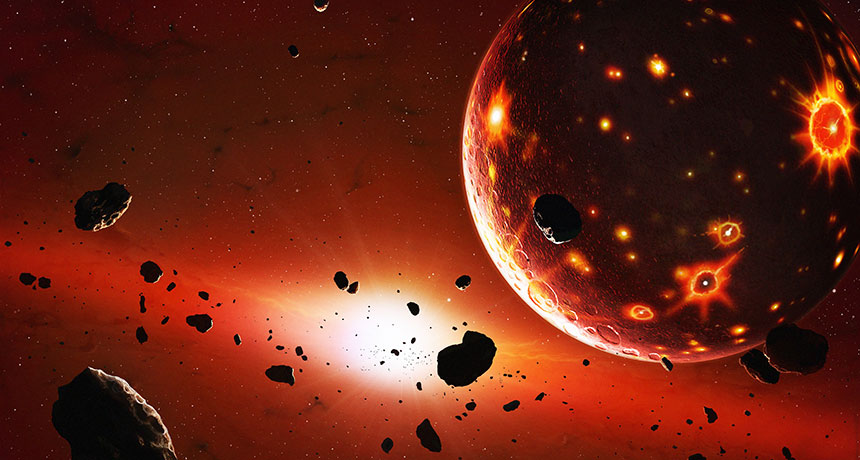This meteorite’s diamonds hint that it was born in a lost planet

A chunk of space rock may have been forged inside a long-lost planet from the early solar system. Tiny pockets of iron and sulfur embedded in diamonds inside the meteorite probably formed under high pressures found only inside planets the size of Mercury or Mars, researchers suggest April 17 in Nature Communications.
The parent planet no longer exists, though — it was smashed to smithereens in the solar system’s violent infancy.
“We probably have in our hands a piece of one of these first planets that have disappeared,” says Philippe Gillet of École Polytechnique Fédérale de Lausanne, or EPFL, in Switzerland.
EPFL physicist Farhang Nabiei, Gillet and their colleagues analyzed minuscule fragments of the Almahata Sitta meteorites. These meteorites are famous for coming from the first-ever asteroid tracked from orbit to ground as it streaked to the Nubian desert in Sudan in 2008 (SN: 4/25/09, p. 13).
The meteorites belong to a class called ureilites, which have compositions different from those in any of the known stony planets in the solar system. These ureilites contain 100-micrometer diamonds — too large to have been formed in the shock of two asteroids colliding. Such diamonds could form, however, inside asteroids that are at least 1,000 kilometers in diameter, where pressures would be high enough to compress carbon.
But the researchers discovered an oddity that made them question whether the gems came from an asteroid at all: The diamonds had grown around even smaller crystals of iron and sulfur, which normally would repel each other like oil and water, says EPFL physicist Cécile Hébert.
Those crystals would be stable only at pressures above 20 gigapascals, almost 200,000 times atmospheric pressure at sea level on Earth. “That can only be at the center of a very large planet” the size of Mercury, about 4,900 kilometers wide, or in the core-mantle boundary of a planet as large as Mars, about 6,800 kilometers wide, Hébert says.
Such planets probably roamed the early solar system some 4 billion years ago. But only a few survived to become the four rocky planets that exist today. Simulations of the early solar system suggest most of these early planets crashed into each other and broke apart in the first 100 million years.
“We are confirming the existence of such former planets,” Gillet says.
Those planets’ existence alone isn’t surprising, says cosmochemist Meenakshi Wadhwa of Arizona State University in Tempe. “This is the first time, though, that there is direct meteoritic evidence for the existence of a large protoplanetary body in the early solar system that is no longer in existence,” she says.
Not so fast, says cosmochemist Martin Bizzarro of the Natural History Museum of Denmark in Copenhagen. The protoplanet explanation isn’t the only one possible.
“They’ve done very careful work,” he says, but more needs to be done. Testing for remnant magnetic fields could reveal if the meteorites were once within a large planet’s molten core, for instance. Whether the meteorites came from a protoplanet is “still an open question.”